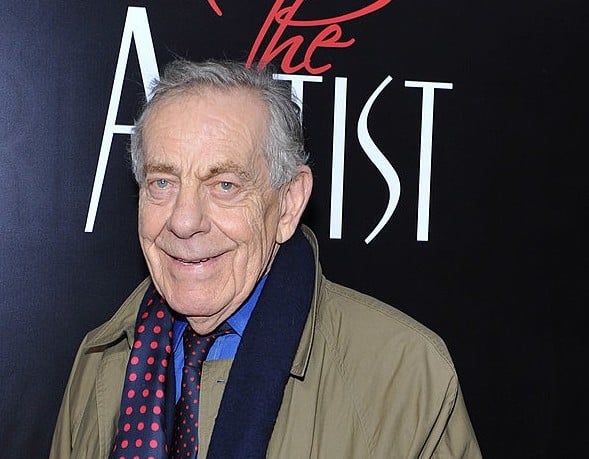
Legendary journalist Morley Safer, a longtime “60 Minutes” correspondent, has died at 84. He had announced his retirement just last week, said his employer, CBS, in an obituary, pointing out that his was the longest run of anyone on prime-time television in the US.
He became known in 1966, when he broadcast footage on CBS News of American soldiers burning the homes of Vietnamese villagers.
Safer’s notorious segment. Photo via YouTube.
But in 2012, he branded “Yes … But is it Art?”, a segment from nearly twenty years before, one of the program’s most controversial because of its dismissive view of contemporary art. It highlighted works by heavyweights such as Robert Gober, Jeff Koons, and Christopher Wool. Safer points out in the 2012 episode that many viewers branded him a philistine after the original show aired. The segment would inspire Dave Hickey’s essay “Frivolity and Unctuousness,” included in his Air Guitar: Essays on Art & Democracy.
Since “But … is it Art?” aired, Safer pointed out in 2012, “Contemporary art has become a global commodity, just like oil or soybeans or pork bellies, and there seems to be no shortage of people wanting to speculate in it.”
Safer in Miami in 2012. Photo via YouTube.
To illustrate that, Safer, undaunted by past criticism, goes to Art Basel Miami Beach to point out the profligate spending and partying, and to epater le bourgeois.
“You can’t tell the exhibitionists from the exhibitions,” quips Morley as art-fair fixtures Eva and Adele stroll by. “The art market sizzles while the stock market fizzles,” he adds, saying that the art can be characterized as “kitsch, cute, clumsy, and incomprehensible.”
Looking at a work by Do Ho Suh that replicates a bathroom fixture from his apartment in cloth, Safer rhetorically asks, “Does that toilet seat raise our spirits, or is it directing us to the men’s room?”
He then wonders, “Is this the biggest scam since Hans Christian Anderson trotted out the emperor’s new clothes?”
Safer sizes up a sculpture. Photo via YouTube.
Along with a few key graphs from from artnet’s Auction Price Database, many art worlders make cameos.
Eli Broad exults in his purchase of a drawing by Kara Walker, whom even Safer describes as “a truly gifted young American artist.”
Collectors like Maria Baibakova stroll the aisles cheek by jowl with the likes of Guggenheim Museum curator Alexandra Munroe.
Safer isn’t seduced by all the spending, pointing out, after listening to Munroe talk about art, that “Artspeak can seem as opaque as spilled alphabet soup.”
Jeffrey Deitch, then director of the Los Angeles Museum of Contemporary Art, takes Safer to task for his old video, suggesting that that the art market has proven him wrong.
Conceding the point, Safer points out that in any event, the collectors can enjoy the works they buy, which are “easier to look at than pork bellies.”
“Or,” he quips as Nick Cave’s Soundsuits appear on screen, “maybe not.”